The Keystone Theatre’s history has been long and illustrious, highs and lows aside. The Keystone has the distinction of being the longest continuously operating theatre in NE Pennsylvania at 131 years of age. Her champions have been all of those who worked to fill her houses and keep her doors open.
The Theatre…
The Keystone Theatre in Towanda, Bradford County, Pennsylvania was built in 1886 and opened in 1887 as the Hale’s Opera House, located on the second floor of the building on Main Street.
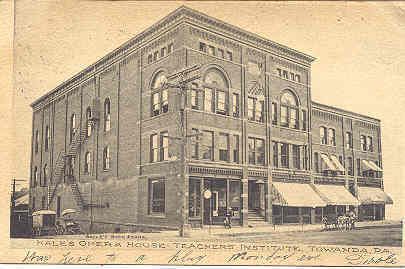
Hale’s Opera House & Teacher’s Institute opened in downtown Towanda in 1887. Image courtesy of BCRAC.
The grand opening on September 21, 1887 featured Mrs. D. P. Bowers in the lead role of “Elizabeth, Queen of England.” It was the great era of early American Theatre and Mrs. D.P. Bowers, it was thought at the time, “would go down in posterity in the history of American stage.”
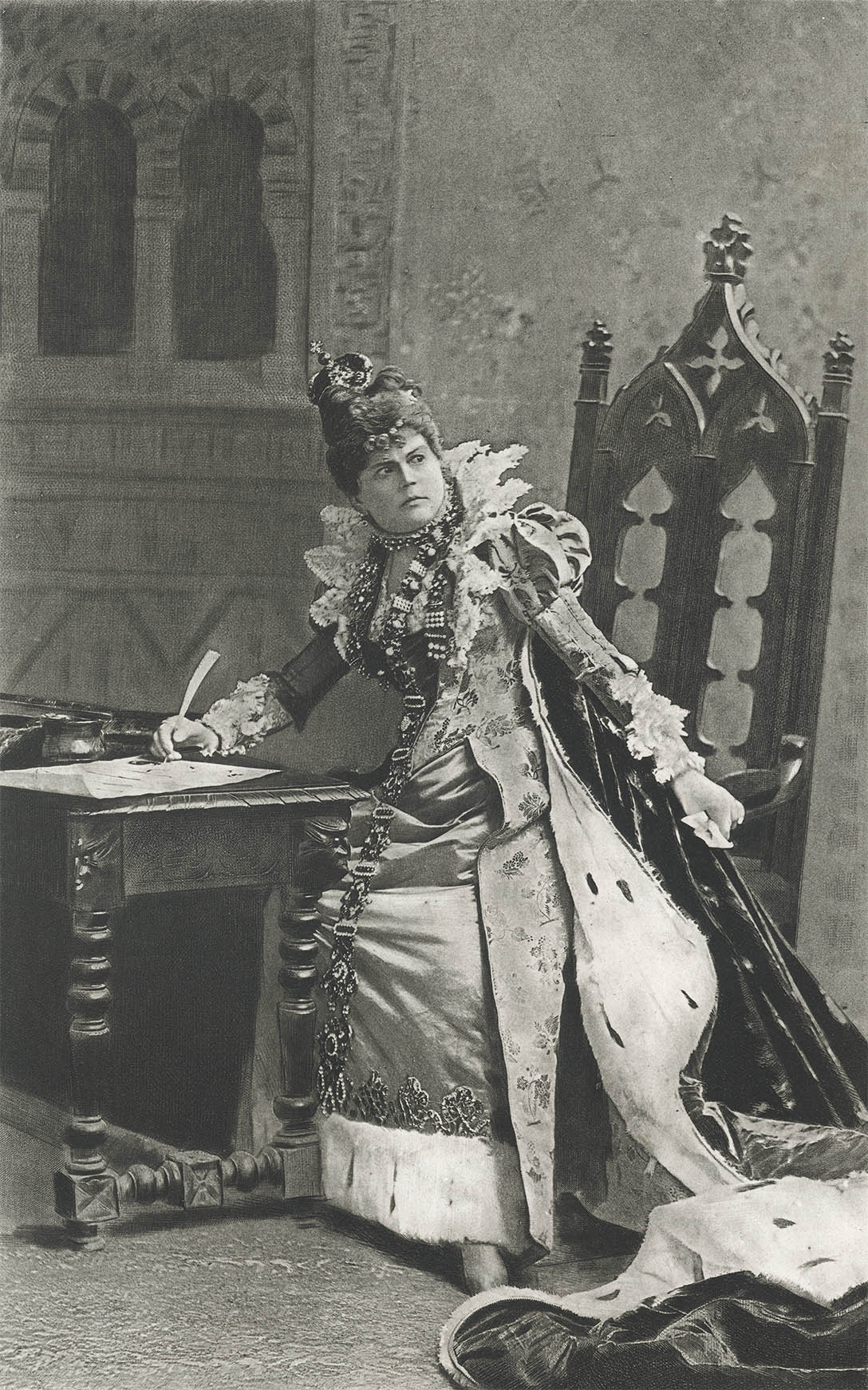
Famous stage actress Mrs. D.P. Bowers opens Hale’s Opera House in “Elizabeth, Queen of England”. Mrs. D.P. Bowers was the stage name of Elizabeth Crocker Bowers. Image courtesy of BCRAC.
Hale’s Opera House offered a palate of minstrel shows as well as local productions, fashion shows and high school graduations. The early days also included productions of Uncle Tom’s Cabin, which played once, and up to four times a year. A boxing match with John Sullivan was attended by over 1,400 people in the 900-seat theatre. News articles of the event described efforts to use 2 by 4’s brought in from the local hardware to support the extra weight of the balconies.
In 1913, the theatre was moved to the first floor. John Philip Sousa’s band came to town, arriving on the Black Diamond Express in the heyday of trains and people using them to come to Towanda from the surrounding small communities. In addition to live performances and community events, silent movies were added. William Woodin, the opera house’s first manager, changed the name of Hale’s Opera House to the Keystone Theatre.
Eventually, movies became the exclusive form of entertainment at the Keystone Theatre. The talkies were the gig in town. By 1950, the theatre had become part of the Comerford Theatre chain which owned theatres in and around the Wyoming and North Branch of the Susquehanna Valleys. Eventually the Comerford chain went under, and the Keystone Theatre was once again an independent venue.
The advent of television and the 1970s oil embargo strained the financial stability of the Keystone Theatre. A drop ceiling was installed covering the balcony, the orchestra pit was covered and the stage was enclosed and covered with a new screen. Times were tough. By 1987, the theatre was worn out, in need of major repairs, and set to close.
BCRAC to the rescue…
In 1988, the theatre was purchased by the Bradford County Regional Arts Council (BCRAC) with the intention of converting it into multi-use cultural center with film, live theatre, music and educational programs. Over the next four years, close to one million dollars were spent on returning the Keystone Theatre to its original appearance, while at the same time, updating and adding basic needs, such as heat, electricity, projection equipment, new roofs, fire escapes, and handicap accessibility. The theatre remained in operation during all of the renovations.
In 1992, a portion of Towanda borough was listed in the National Register of Historic Places as the Towanda Historic District (Key #096414). The theater is a contributing resource to the historic district because it is part of the character, history, and significance of Towanda.
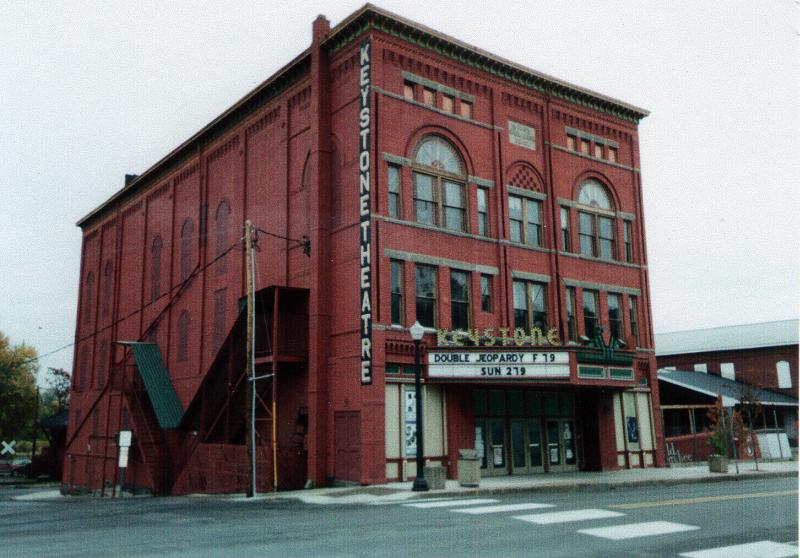
Keystone Theatre in 1992.
The Keystone’s 550 seats were repaired, the plasterwork in the auditorium restored, and the lobby enlarged. The drop ceiling of the 1970’s was removed, the balcony returned to use, and the stage was restored with the false wall in front of it removed. In 2001, a second theatre with stadium-style seating was added to the Keystone Theatre replacing an adjoining building that had burned in the 1970s.
Keystone Grant for the Keystone…
In 2016, BCRAC received a PHMC grant. This grant was used to replace a piece of the Keystone that was laid in 1886 and, until this summer, had not seen the light of day in 130 years.
Behind the building’s decorative cornice and below layers of roofing, the integrated roof gutters, constructed of wood and brick, perhaps state of the art in 1886, had failed. Water designed to flow along the gutter troughs at the top edge had begun spilling over the edge of the building causing dangerous ice buildup and safety issues on the walks below.
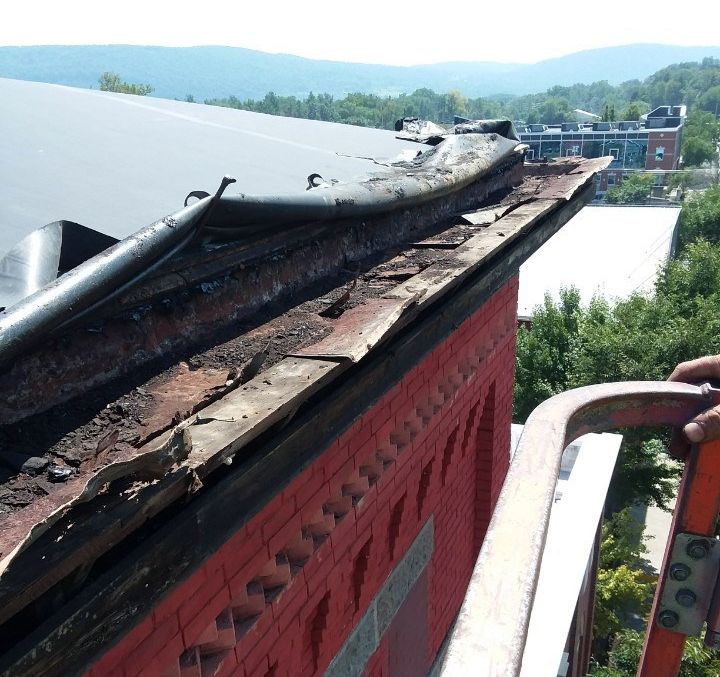
View along west side of the roof (front of building) looking south, showing rotted and damaged wood and membrane – August 31, 2018.
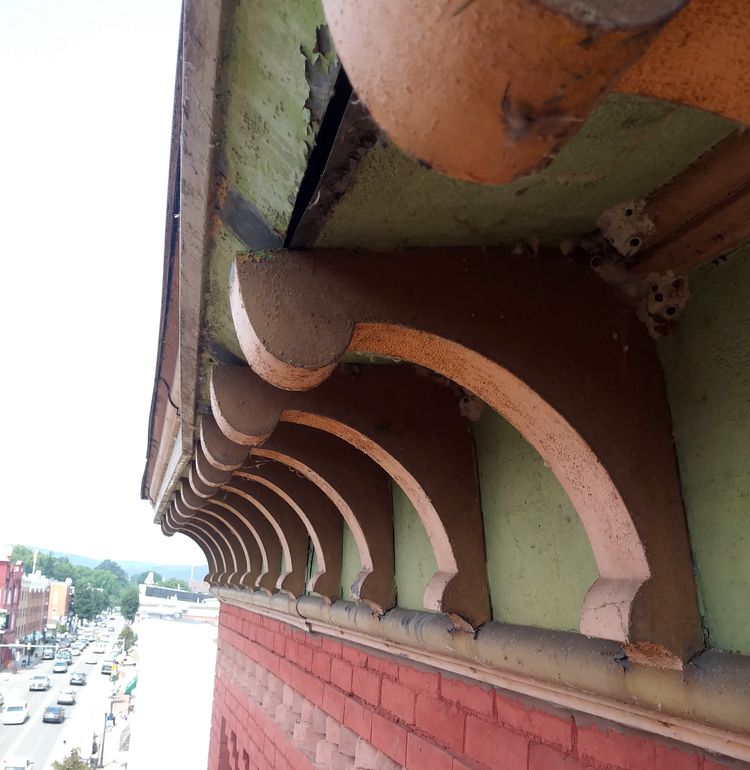
View of condition of decorative cornice along front (west side) of building – August 31, 2018.
The work was completed by MacBuilders & Design of New Albany, Pennsylvania. The project got underway in late August with a leering deadline of September 30th, but this was a determined and dedicated crew. After removing the cornice, the owner came to us and offered to do some work outside of the project scope. He wanted to repair, strip and paint the decorative cornice that was removed to do the work.
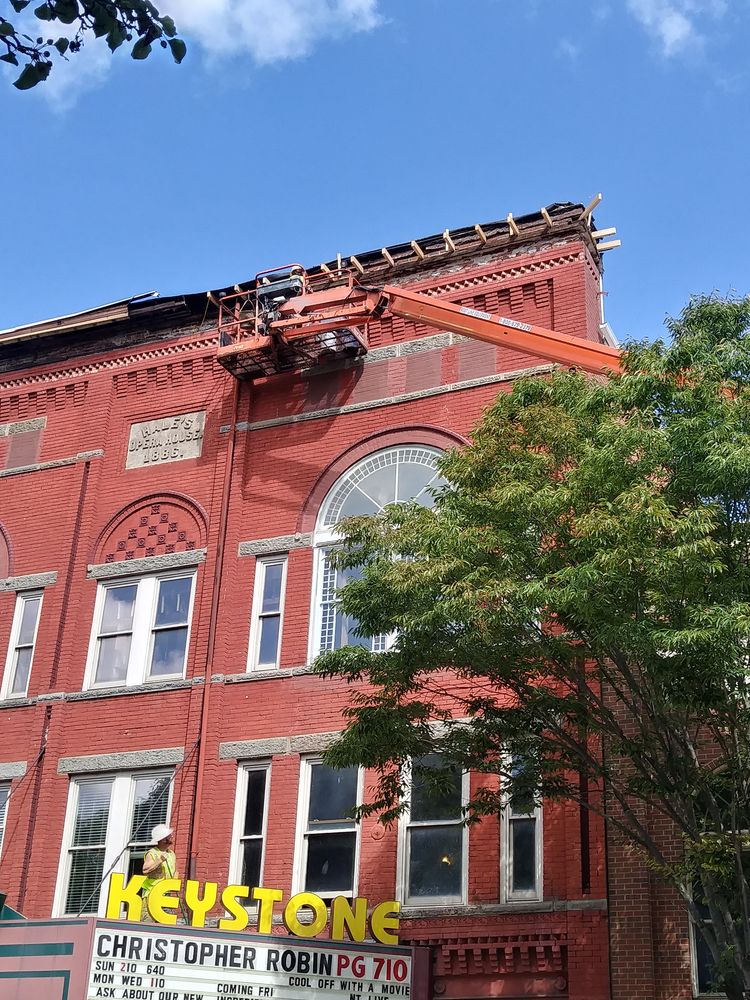
View from ground of front (west side) of building during repair – September 7, 2018.
With a heart for historic buildings and their preservation and in respect to the care the BCRAC has given this building over the past 30 years, he wanted to restore the cornices. We agreed to trade advertising with him for the work, his advertising may well outlive all of us. But his work and the work of his crew was phenomenal.
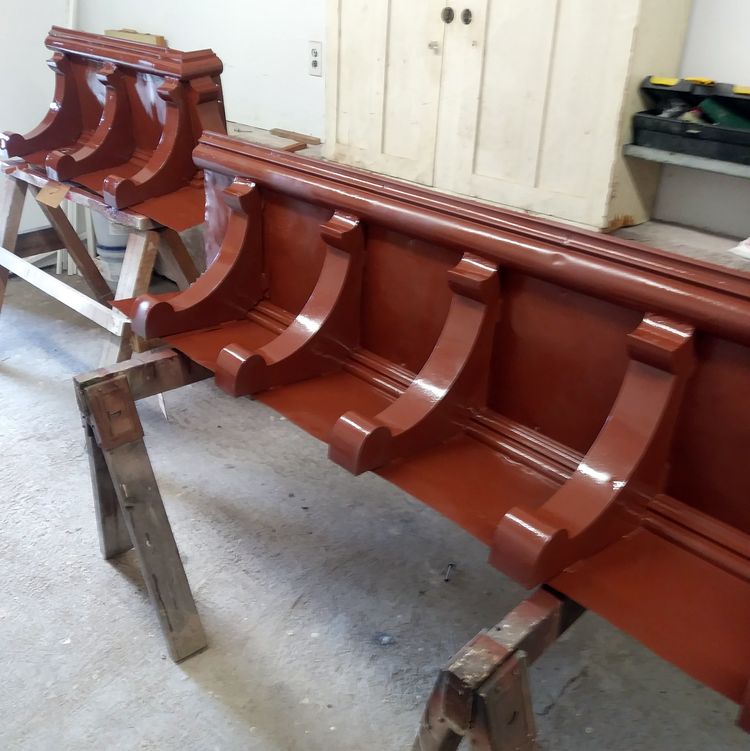
Cornice after repair – September 21, 2018.
So now, seventy feet above Main Street, the newly rebuilt gutter system sits silently once again hidden behind the beautifully restored historic cornice. If you look really closely, you will also see a piece of the Keystone Theatre uncovered by the BCRAC in 1988, a permanently installed brick at the top of the building that reads, HALES OPERA HOUSE.
The brick in the plaza at the entrance of the theatre reads: The Keystone Theatre built in 1886 as the Hales Opera House. It is the oldest operating theatre in northeast Pennsylvania. Dedicated to all people – past, present and future for whom the Arts and this community theatre give meaning.
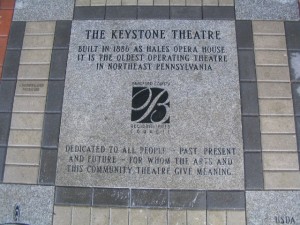
Keystone Theatre stone marking renovation.
This week’s guest contributor is Elaine Poost. Elaine is the Executive Director of the Bradford County Regional Arts Council in Towanda, PA.

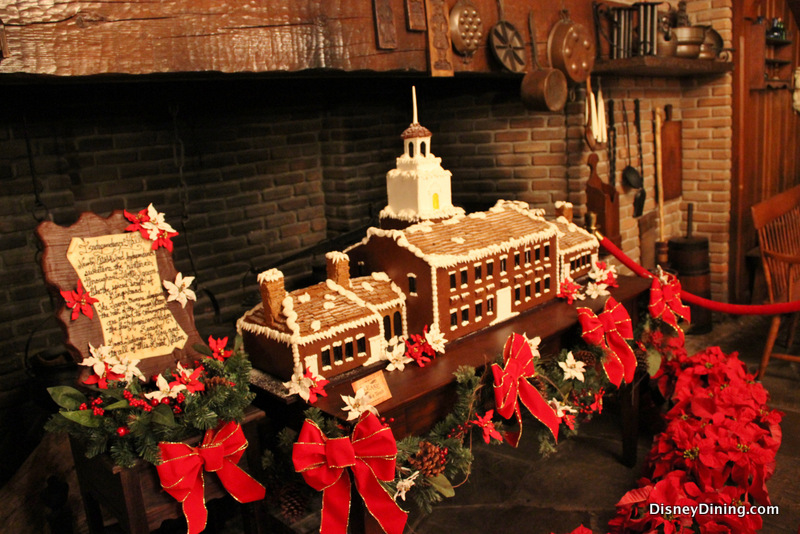
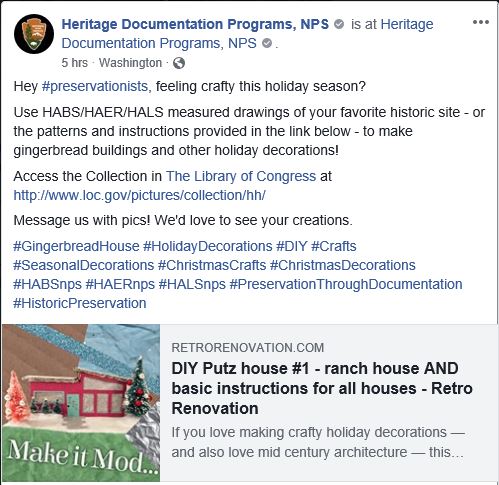

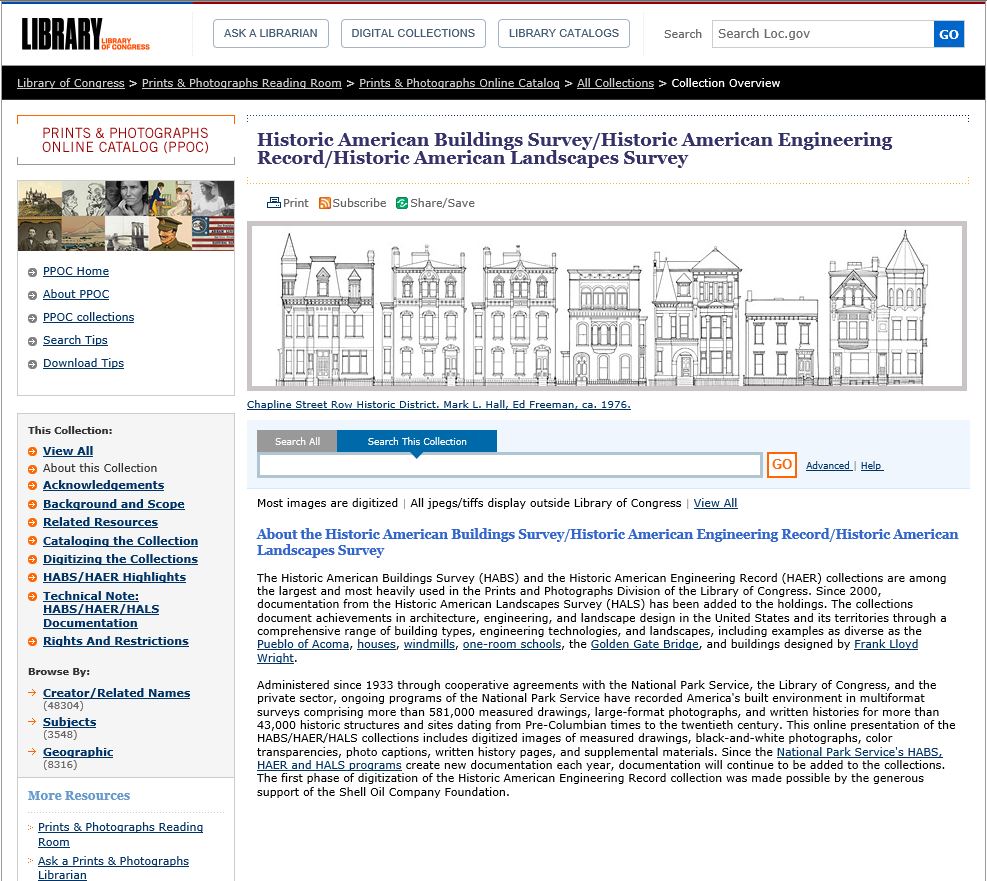

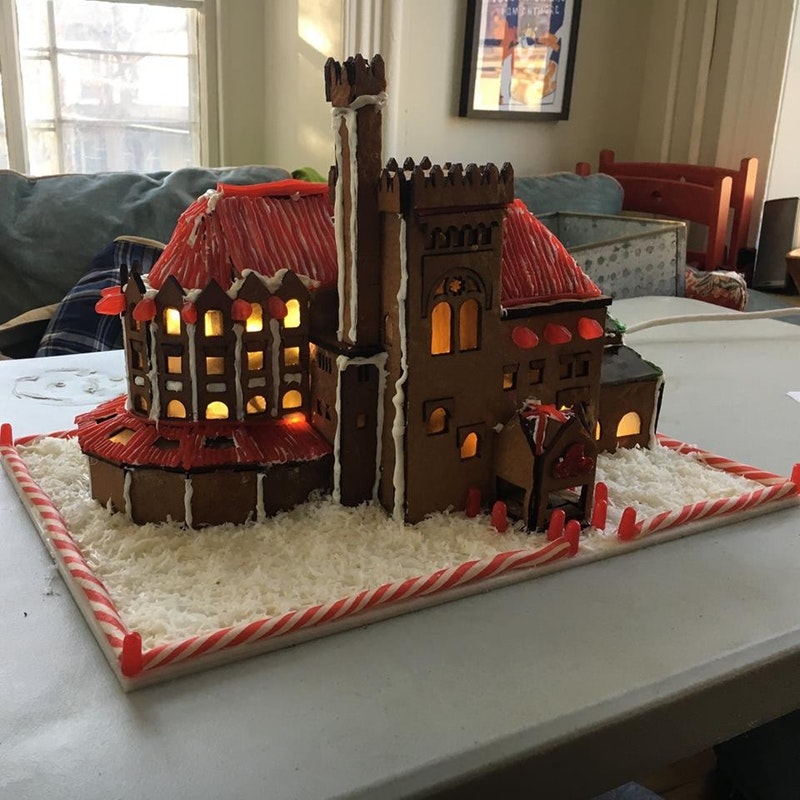

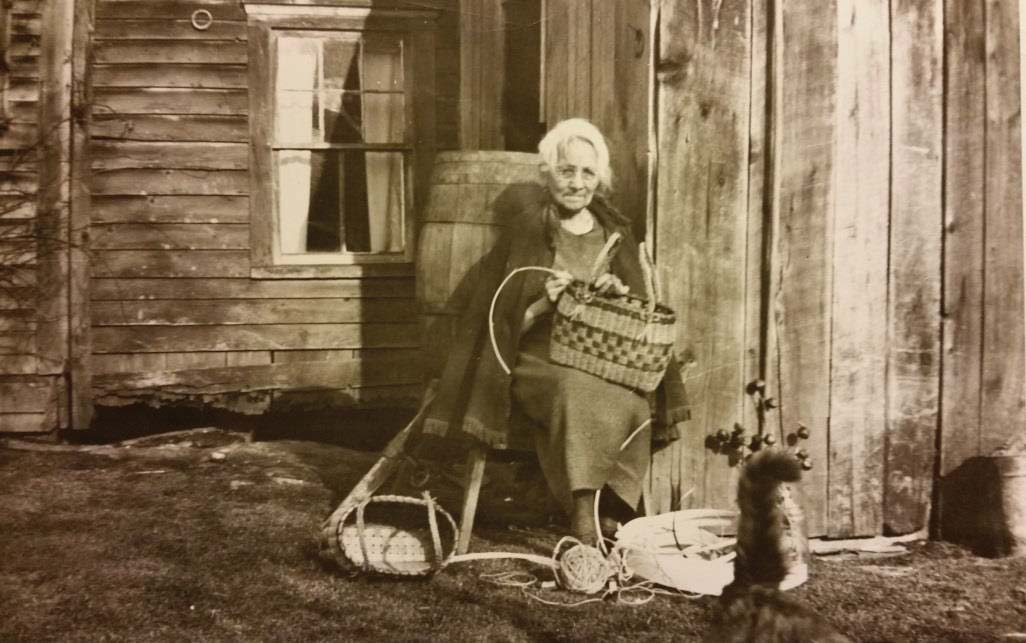








Recent Comments